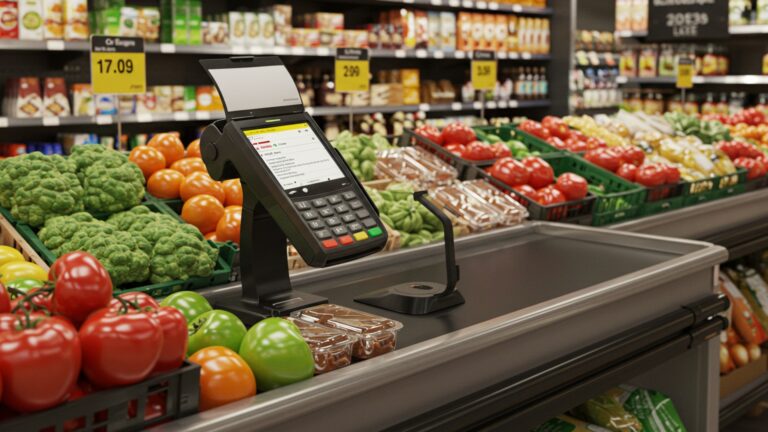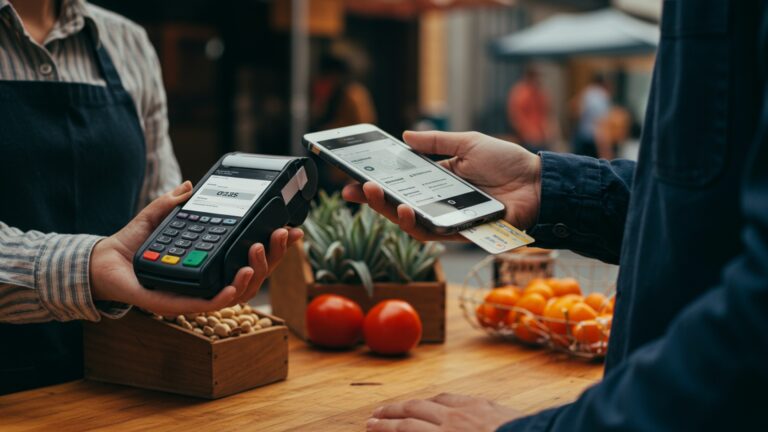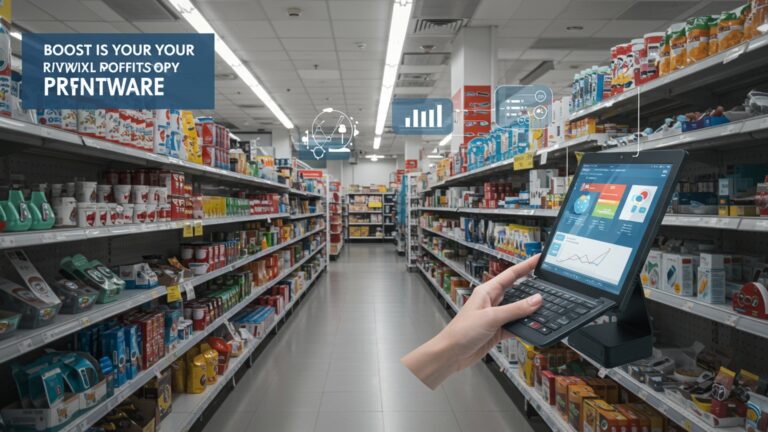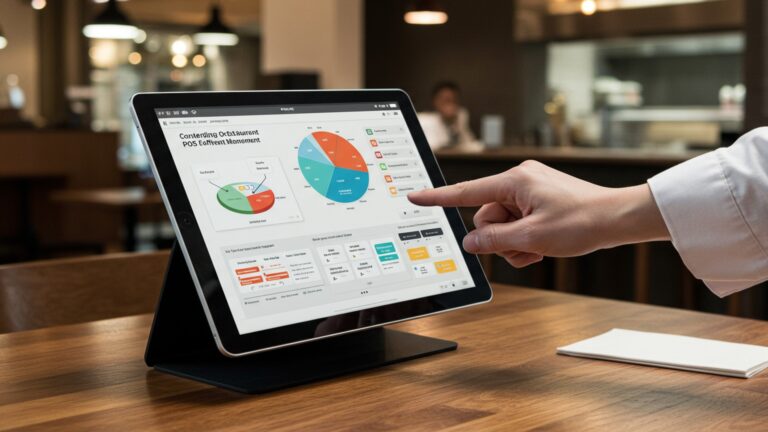Learn How Cloud Based POS Software Boosts Business Efficiency
In today’s hyper-competitive retail environment, merely processing transactions falls short; businesses demand strategic operational intelligence to thrive. Legacy systems often create fragmented data and hinder agility, making the transition to cloud based POS software not just an upgrade. a necessity. This modern solution delivers unparalleled real-time insights into sales, inventory. customer behavior, accessible securely from any device, anywhere. By integrating seamlessly with e-commerce platforms and streamlining everything from stock management to personalized customer engagement, cloud POS empowers businesses – from boutique shops to multi-location enterprises – to optimize operations, reduce overheads. pivot rapidly in response to market shifts, fundamentally boosting efficiency and growth.

Understanding Cloud-Based POS Software
In today’s fast-paced business environment, efficiency is paramount. For many retail, hospitality. service-based businesses, the Point of Sale (POS) system is the beating heart of their operations. Traditionally, POS systems involved on-premise hardware and software. a significant revolution has taken place with the advent of cloud-based POS software. To fully grasp its impact, let’s first define what we mean by these terms.
What is a POS System?
A Point of Sale (POS) system is the place where your customer makes a payment for products or services. More than just a cash register, modern POS systems are comprehensive tools that manage sales, inventory, customer data. sometimes even employee management. It’s the central hub for transactions and a critical touchpoint for customer interaction.
What Does “Cloud-Based” Mean?
The “cloud” refers to a network of remote servers hosted on the Internet and used to store, manage. process data, rather than a local server or a personal computer. When software is “cloud-based,” it means the application and its data are hosted on these remote servers. users access them over the internet, typically through a web browser or a dedicated app. This eliminates the need for businesses to install and maintain physical servers on their premises.
How Cloud-Based POS Software Works
Unlike traditional POS systems, where software and data reside on local computers or servers within your business, cloud-based POS software operates entirely online. When you make a sale, enter new inventory, or update customer data, that data is instantly transmitted and stored securely in the cloud. This means:
- Accessibility
- Real-time Updates
- Reduced Hardware Needs
- Automatic Backups
You can access your POS system from any internet-enabled device, anywhere in the world.
All changes and transactions are updated instantly across all connected devices and locations.
The core processing power and data storage are managed by the cloud provider, reducing your need for expensive on-site servers.
Data is regularly backed up by the cloud provider, offering robust disaster recovery.
This fundamental shift from local hosting to remote, internet-based hosting is what unlocks the significant efficiency gains that cloud-based POS software offers.
The Core Pillars of Efficiency: How Cloud-Based POS Software Delivers
The transition to cloud-based POS software isn’t just about modernizing; it’s about fundamentally transforming how businesses operate, leading to measurable improvements in efficiency across various fronts.
1. Unparalleled Accessibility and Mobility
One of the most immediate benefits of cloud-based POS software is its inherent accessibility. Business owners and managers are no longer tethered to a physical location to oversee operations. Imagine Sarah, who owns a chain of boutique coffee shops. With a cloud-based system, she can check sales figures, adjust prices, or even manage staff schedules from her home, during a business trip, or even while visiting another store location, all from her smartphone or tablet. This level of mobility empowers owners to make informed decisions on the go, react quickly to market changes. maintain oversight without constant physical presence.
2. Real-time Data and Analytics for Smarter Decisions
Data is the new currency. cloud-based POS software is a powerful mint. Every transaction, inventory movement. customer interaction generates valuable data that is instantly available. This real-time visibility allows businesses to:
- Identify Trends
- Optimize Inventory
- Personalize Customer Experience
Spot popular products, slow-moving items. peak sales hours.
Make data-driven decisions on what to reorder and when, minimizing stockouts and overstocking.
comprehend customer preferences and purchasing history to offer targeted promotions.
For a restaurant owner, knowing instantly which menu items are selling best at lunch versus dinner can inform ingredient ordering and staffing levels, reducing waste and improving service speed. This actionable insight, readily available through customizable dashboards and reports, is a significant efficiency booster.
3. Cost-Effectiveness and Reduced IT Overhead
Traditional POS systems often require a significant upfront investment in hardware, software licenses. ongoing IT support. Cloud-based POS software typically operates on a subscription model (SaaS – Software as a Service), which transforms a large capital expenditure into a predictable operational expense. This means:
- Lower Upfront Costs
- Reduced Maintenance
- Scalability
No need to purchase expensive servers or perpetual software licenses.
The cloud provider handles all software updates, maintenance. security patches.
Easily add or remove terminals and users without major hardware upgrades.
For a small business, this cost structure can be a game-changer, allowing them to access enterprise-level functionality without the associated enterprise-level price tag and IT burden.
4. Scalability and Flexibility for Growth
As businesses grow, their POS needs evolve. A traditional system might require costly hardware upgrades or complex installations to accommodate new locations or increased transaction volumes. Cloud-based POS software, But, is inherently scalable. Adding a new terminal, opening a new store, or expanding your product lines can often be done with a few clicks, without significant IT intervention. This flexibility ensures that your POS system grows with your business, rather than becoming a bottleneck. Consider a retail brand expanding from one to five locations; with cloud-based POS, all new stores can be brought online quickly, sharing a centralized inventory and customer database, ensuring consistency and efficiency across the board.
5. Enhanced Security and Robust Data Backup
Data security is a paramount concern for any business. While some might initially perceive cloud solutions as less secure, reputable cloud-based POS software providers invest heavily in cutting-edge security measures far beyond what most small or medium-sized businesses could afford on their own. This includes:
- Encryption
- Regular Backups
- Compliance
- Disaster Recovery
Data is encrypted both in transit and at rest.
Automated, frequent backups prevent data loss from hardware failure, human error, or natural disasters.
Adherence to industry-specific security standards (e. g. , PCI DSS for payment processing).
Multiple redundant servers ensure business continuity even if one data center experiences an outage.
This robust infrastructure provides peace of mind and protects sensitive business and customer data, significantly reducing the risk and potential costs associated with data breaches or loss.
6. Streamlined Operations and Inventory Management
Efficient inventory management is critical for profitability. Cloud-based POS software integrates sales data directly with inventory, providing a real-time, accurate picture of stock levels. This integration leads to:
- Automated Stock Updates
- Purchase Order Generation
- Multi-Location Inventory
- Reduced Manual Errors
Inventory automatically adjusts with every sale, return, or transfer.
Systems can automatically suggest or generate purchase orders when stock hits predefined reorder points.
Easily track inventory across multiple stores from a single dashboard.
Automation minimizes human errors associated with manual inventory counts.
This level of automation frees up staff from tedious manual tasks, allowing them to focus on sales and customer service, directly boosting operational efficiency.
7. Improved Customer Experience
Ultimately, business efficiency often translates into a better customer experience. Cloud-based POS software contributes to this through:
- Faster Checkouts
- Personalized Service
- Omnichannel Capabilities
- Flexible Payment Options
Modern interfaces and reliable connectivity speed up transactions.
Access to customer purchase history allows staff to offer relevant recommendations and loyalty rewards.
Seamless integration between online and in-store sales, allowing for click-and-collect or easy returns.
Support for various payment methods, including mobile payments and contactless options.
A smoother, more personalized shopping experience leads to higher customer satisfaction, repeat business. positive word-of-mouth, all contributing to long-term business success.
Cloud vs. Traditional POS: A Comparative Look
To further highlight the benefits, let’s compare cloud-based POS software with its traditional, on-premise counterpart.
| Feature/Aspect | Cloud-Based POS Software | Traditional (On-Premise) POS |
|---|---|---|
| Data Storage | Remote servers (cloud) | Local servers/computers |
| Accessibility | Anywhere, any device with internet | Limited to local network/physical location |
| Upfront Cost | Lower (subscription model) | High (hardware, software licenses) |
| Maintenance & Updates | Handled by provider, automatic | Requires in-house IT or third-party support |
| Scalability | Highly scalable, easy to add locations/users | Can be complex and costly to scale |
| Data Security | Robust, enterprise-level security by provider | Depends on in-house security measures, often less robust |
| Data Backup | Automated, off-site, redundant | Manual or requires specific local setup |
| Real-time Reporting | Instantaneous across all locations | Often delayed, requires manual data consolidation |
| Hardware Dependency | Less dependent, can run on various devices | Highly dependent on specific hardware |
Real-World Impact: Case Studies and Applications
The theoretical benefits of cloud-based POS software truly come alive when observed in practical business settings. Here are a few illustrative examples:
Case Study 1: The Growing Boutique – “The Gilded Stitch”
The Gilded Stitch, a small fashion boutique, started with a single physical location. As their popularity grew, they decided to open an e-commerce store and a second physical location in a neighboring town. Implementing a traditional POS system for this expansion would have meant significant hardware purchases for the new store, complex data synchronization between the two physical locations. a completely separate system for their online sales, leading to siloed inventory and customer data. By adopting cloud-based POS software, The Gilded Stitch achieved a seamless integration. Their online sales automatically update inventory alongside in-store purchases. Both physical stores operate from the same centralized database, allowing customers to return items bought at one store to the other. The owner can monitor sales performance across all channels from a single dashboard, easily identify best-selling items. manage staff schedules for both locations remotely. This unified approach boosted efficiency by eliminating manual data entry, reducing inventory discrepancies. providing a holistic view of their business performance, ultimately supporting their rapid growth.
Case Study 2: The Multi-Location Restaurant – “Taste of the World”
Taste of the World is a popular restaurant chain with five locations across a major city. Before switching to cloud-based POS software, each restaurant managed its own inventory, daily sales reports. employee time sheets independently. This led to inconsistencies in pricing, difficulty tracking food costs across the entire chain. a lengthy process for consolidating financial reports at month-end. With a cloud-based solution, all five locations now operate under a single, unified system. Menu updates, pricing changes. promotional offers can be pushed out to all restaurants instantly. Inventory for common ingredients is managed centrally, allowing for bulk purchasing discounts and efficient stock rotation. The corporate management team can view real-time sales data, labor costs. popular dishes for each location, or for the entire chain, at any moment. This has drastically improved operational efficiency, reduced food waste, streamlined payroll. provided invaluable insights for menu development and marketing strategies.
Case Study 3: The Mobile Service Provider – “Urban Groomers”
Urban Groomers offers mobile pet grooming services, with a fleet of vans operating across several districts. Their challenge was managing appointments, processing payments. tracking client history while on the go. A traditional POS system was impractical due to the mobile nature of their business. By leveraging cloud-based POS software, each grooming van is equipped with a tablet running the POS application. Groomers can access client profiles, view past service history, schedule future appointments. process payments securely (including credit cards and mobile payments) right at the client’s home. All data—appointments, payments, client notes—is instantly synced to the cloud, accessible by the central office. This has eliminated paper appointment books, reduced billing errors, provided a professional payment experience for clients. given the business owner real-time visibility into each van’s daily performance, significantly boosting their service efficiency and customer satisfaction.
Actionable Steps: Implementing Cloud-Based POS Effectively
Migrating to or adopting cloud-based POS software can be a transformative step. To ensure a smooth transition and maximize efficiency gains, consider these actionable steps:
- Define Your Needs
- Research and Compare Providers
- Plan Your Migration
- Invest in Staff Training
- Leverage Data Analytics
- Integrate with Other Systems
Before looking at solutions, clearly outline your business’s specific requirements. What features are essential? (e. g. , inventory management, customer loyalty, online ordering integration, employee management). What is your budget?
The market for cloud-based POS software is robust. Look for providers with a strong track record, positive reviews. features that align with your needs. Consider factors like ease of use, customer support, integration capabilities (e. g. , with accounting software, e-commerce platforms). security protocols. Request demos and compare pricing models carefully.
If you’re switching from an existing system, plan how you will migrate your existing data (inventory, customer lists, sales history). Many cloud POS providers offer migration tools or support.
Even the most intuitive cloud-based POS software requires proper training. Ensure all staff members who will interact with the system are thoroughly trained on its features and best practices. Well-trained staff will lead to faster adoption and fewer errors.
Don’t just collect data; review it. Regularly review the reports and dashboards provided by your cloud-based POS software. Use these insights to make informed decisions about inventory, staffing, marketing. product offerings.
To truly maximize efficiency, integrate your cloud-based POS software with other critical business tools, such as accounting software (e. g. , QuickBooks, Xero), CRM systems. e-commerce platforms. This creates a unified ecosystem that eliminates data silos and automates workflows.
Security Considerations and Best Practices
While cloud-based POS software providers offer robust security, businesses also play a crucial role in maintaining data integrity and security. Here are best practices:
- Choose Reputable Vendors
- Strong Access Controls
- Secure Your Network
- Regularly Monitor Activity
- Stay Informed
Select providers that are transparent about their security measures, comply with industry standards (like PCI DSS for payment processing). have a strong reputation for data protection. Inquire about their data encryption methods, backup policies. disaster recovery plans.
Implement strong, unique passwords for all user accounts. Utilize multi-factor authentication (MFA) whenever available. Limit user permissions to only what is necessary for their role (e. g. , cashiers don’t need access to sensitive financial reports).
Ensure your local Wi-Fi network is secure with strong encryption (WPA2/WPA3) and a robust firewall. Isolate your POS network from public Wi-Fi networks if possible.
Keep an eye on user activity logs and transaction histories for any suspicious behavior.
Be aware of common cyber threats and educate your staff on phishing scams and other social engineering tactics that could compromise your system.
Conclusion
Ultimately, embracing cloud-based POS software isn’t merely an upgrade; it’s a strategic imperative for any business aiming for unparalleled efficiency in today’s dynamic market. We’ve seen how features like real-time inventory updates prevent stockouts – I recall a small bakery client who halved their waste by precisely tracking fresh goods across multiple locations, a direct result of cloud data. The ability to access sales reports from anywhere, whether you’re at home or travelling, empowers truly agile decision-making, a crucial trend in our increasingly remote-friendly world. My personal tip? Don’t just install it; actively explore its integration capabilities with other business tools, like your CRM or accounting software, to unlock its full potential. This interconnectedness is where the real magic of efficiency happens. As businesses navigate evolving consumer demands and recent supply chain shifts, investing in a robust cloud POS system isn’t just about processing transactions; it’s about building a resilient, responsive. future-proof operation. It’s time to transform your retail experience and propel your business forward.
More Articles
Future Proof Your Business How to Leverage Cloud Based POS Software Benefits
A Complete Guide How to interpret and Use Essential POS Software Features
Simplify Your Transactions How to Master POS Billing Software for Accuracy
Unleash Business Mobility How to Implement Mobile POS Software Solutions Seamlessly
FAQs
What exactly is cloud-based POS software?
It’s a point-of-sale system that runs over the internet, not on a local server in your store. This means you can access your sales data, inventory. reports from anywhere, on any device, making your business much more flexible and responsive.
How does it make daily store operations smoother?
Cloud POS streamlines everything from ringing up sales to managing returns. Transactions are faster, inventory updates automatically in real-time. staff can quickly look up product details or customer histories, cutting down on manual errors and wait times.
Can it really help me keep better track of my inventory?
Absolutely. With real-time inventory tracking, you always know what’s in stock, what’s selling. what you need to reorder. This reduces the chances of running out of popular items or having too much dead stock, saving you money and improving customer satisfaction.
What if I have multiple store locations? Does it make managing them easier?
Yes, it’s a game-changer for multi-location businesses. All your stores’ data is centralized in one place. You can manage products, pricing, promotions. staff across all locations from a single dashboard, giving you a complete overview and consistent operations.
Is my business data actually secure in the cloud?
Reputable cloud POS providers invest heavily in security measures like data encryption, regular backups. robust firewalls, often more than a small business could afford on its own. Your data is typically more secure and consistently backed up than with an on-premise system.
How does it improve the customer experience?
It speeds up checkout times, allows for personalized promotions based on purchase history. makes loyalty programs easy to manage. Quicker, more personalized interactions lead to happier customers and encourage them to keep coming back.
What kind of business insights can I get from this software?
You get powerful analytics on sales trends, popular products, employee performance, peak business hours. more. This data helps you make smarter decisions about staffing, marketing. purchasing, ultimately boosting your profitability and efficiency.






